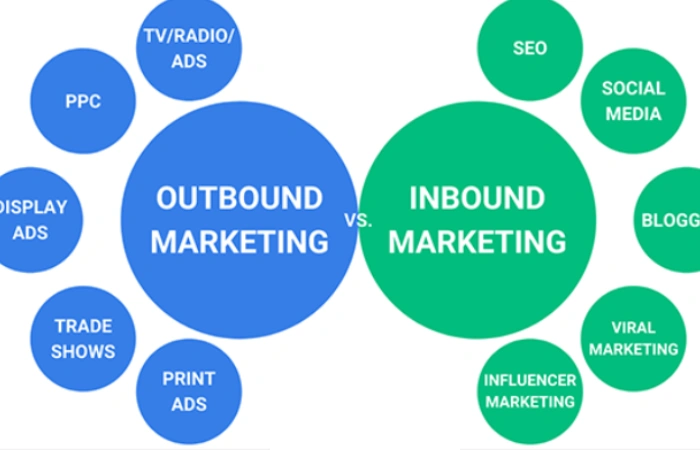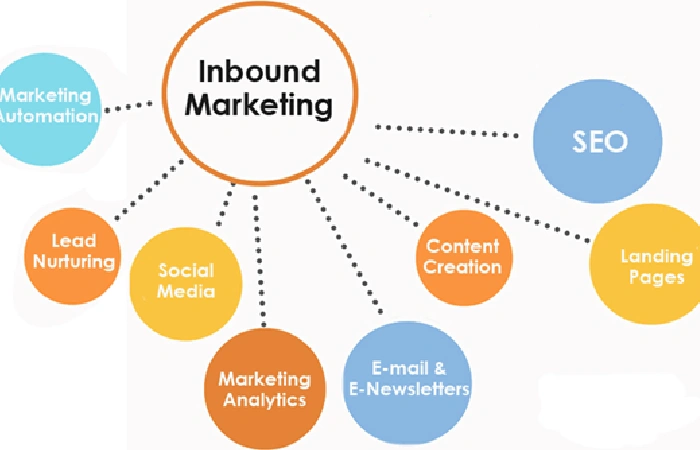Outbound Marketing is, it seems, in loss for a few years, to the benefit of Inbound Marketing. The figures would also confirm this trend, since it is estimated for example that 80% of Internet users are completely unaware of sponsored links on source search engines). But, at the same time, it is estimated that on purchase-intent searches, 40% of clicks are captured by sponsored ads (source).
So, Inbound or Outbound, should we choose?
Of course, you suspect Ad Premier’s answer. If we chose to form a team of experts from the different digital marketing channels, it is because we are firmly convinced that an ambitious strategy in this area must bring together the different levers in a global approach.
Inbound et Outbound:
- Do not meet the same constraints (time, means, market, etc.).
- Do not target perfectly assimilable audiences.
- Are not sufficient, individually, to meet all consumer expectations.
- Do not always fit into the same investment strategies.
Opposing the two is not meaningless. In some contexts, this opposition can even, on occasion, inform decision-making. But both have their advantages as well as their disadvantages, and it would be a shame to deprive ourselves of the benefits of their complementarity on principle.
So, let’s start from the beginning: the definition of these two major approaches to web marketing.
Table of Contents
Definition and Fields of Application

If we had to translate these two English terms into good French (which we rarely do…), we would speak of “inbound marketing” and “outbound marketing”. The translation is certainly not very happy, but it has the merit of introducing in a colorful way the definition of the two approaches.
Inbound: the Attractiveness of Content
Inbound Marketing refers to the actions that a company implements so that its commercial target spontaneously addresses it to meet one of its specific needs. The implementation of such a strategy therefore involves the creation and posting of content rich in information, produced according to the “buyer persona” determined beforehand.
Today, inbound materializes in particular in blog articles, videos, infographics, publications on social networks or even white papers. The goal is to combine organic reach and brand image to initiate and deepen a commercial relationship through these channels.
Outbound: the Power of Targeted Advertising
Outbound Marketing refers to actions that aim to deploy, in a targeted manner, advertising messages or “Direct Marketing” communications, based on the exploitation of personal data to develop the targets of these messages.
Today, most outbound strategies are based on online advertising agencies, including Google Ads, Bing Ads, Facebook Ads, Instagram Ads, Amazon Advertising and LinkedIn Ads. But, in many sectors, direct emailing is also used to advantage, or even channels related to more traditional “Push Marketing”, such as SMS or telephone calls.
Contemporary Marketing Erases Borders
Outbound Marketing and Inbound Marketing solutions thus give the impression of competing with each other. However, in practice, they are rarely used exclusively. And for good reason, they are often part of long and complex processes, within which it would not be relevant to set up such a segmentation of acquisition levers.
Let’s take the example of the very fashionable “lead magnets”, these high value-added contents that users can obtain on the condition of transmitting a certain amount of personal information. You have certainly seen white papers that fall within this framework. They are widely used in the B2B sectors and increasingly in the B2C sectors. A priori, we are on an inbound approach in good and due form. However, the distribution of these lead magnets is often amplified by outbound levers. And it’s a very good idea, because it considerably increases their reach and makes the “inbound” efforts necessary for their production more profitable.
In fact, in all areas of web marketing, inbound and outbound reinforce each other when used wisely.
Here is how to apprehend this complementarity in broad outline…
Inbound and Outbound on Search Engines

In terms of SEO on search engines, it is customary to distinguish between organic referencing (SEO) and paid referencing (SEA). This distinction is of course relevant. There is inbound SEO, which aspires to attract users by creating content, and outbound SEO, which reaches out to users based on targeting criteria.
But we see on a daily basis that exclusively organic or exclusively sponsore acquisition strategies are increasingly limited in their performance. You have already told on this blog about the beneficial links between SEA and SEO. The fact is that an ambitious SEO cannot totally do without SEA, and vice versa.
For example, SEA offers almost instantaneous adaptability, which has no equivalent for probing new keyword opportunities, A/B testing new copywriting elements, verifying the relevance of new marketing targets. However, this real-time information from SEA is very useful for adjusting SEO strategies by avoiding trial and error that waste time. And, more generally, paid search offers an essential source of data for organic referencing.
Conversely, content created as part of inbound SEO strategies also reinforce SEA strategies that share the same commercial targets. In particular, they provide real added value in terms of brand image, conversion or even loyalty. In addition, in extremely competitive configurations, they help lower acquisition costs by offering alternatives to less profitable Ads campaigns.
You therefore understand that, to make the most of your presence on search engines, you cannot choose between Outbound Marketing and Inbound Marketing. This is also what led us to offer you our dual expertise of SEA agency and SEO agency.
Inbound and Outbound on Social Networks
As on search engines, it is customary to make a distinction on social networks between inbound strategies of Community Management and outbound strategies of Ads campaigns. On the one hand, we create content to develop an audience and deepen the relationship with this audience. On the other side, targeted advertisements deliver to users of the respective network. But, in practice, there is little point in separating these two approaches…
At Ad Premier, we had convince of this for a long time, but we were able to verify it relentlessly on one network in particular: LinkedIn.
In 2019, faced with the difficulties encounter by all advertisers in generating good returns on investment with LinkedIn Ads campaigns, we decide to create a subsidiary specially dedicated to this essential B2B platform. Our idea? Combine it with Inbound Marketing, based on the creation of content distributed on profiles, and Outbound Marketing, based on prospecting by private messages. On the one hand, we attract a qualified audience; on the other hand, the members of this audience are approach individually.
Result: our Community Managers began to collect “prospect meetings” like real salespeople. By combining inbound and outbound, they simply generate business opportunities.
And that goes for all social media. This is even the basis of what is called “Social Selling”, this approach which places interactions on social networks at the heart of the commercial relationship with a target.
Give before receiving or, better, give and receive indistinctly: this should be the watchword in digital marketing strategy on social networks. This is the condition for truly anchoring a value proposition in the mind of a commercial target.
Inbound and Outbound on Emailing

The idea is the same in terms of emailing and it can quickly mention.
Consider opt-ins. Site owners are increasingly using them to grow their email marketing audience. A priori, they are part of an outbound approach, since the final goal is to distribute commercial emails to people concerned by the offer that is highlighted there.
However, the best way to encourage users to give their email address (for example to subscribe to a newsletter) is to integrate this approach into a qualitative content creation environment. Not to mention that this content will have a beneficial effect on the conversion rate of emails sent afterwards.
Again, Inbound Marketing amplifies the effects of Outbound Marketing. But, in return, the performance of the various outbound actions (here, email marketing) must also make it possible to better identify the needs of the target and to adapt the creation of content accordingly.
Conclusion: think “Marketing” before Thinking Inbound vs. Outbound
Intelligently combining Outbound Marketing actions with Inbound Marketing actions creates virtuous circles in your business strategy. Doing so gives you the means to:
- Fix your communication on a strong brand image
- Better understand your target
- Lower your acquisition costs
- Build customer loyalty
- Sustain the growth of your business
The key? You must think “Marketing” before thinking “Outbound” or “Inbound”. Start by making sense of your approach before settling on how to implement it.

